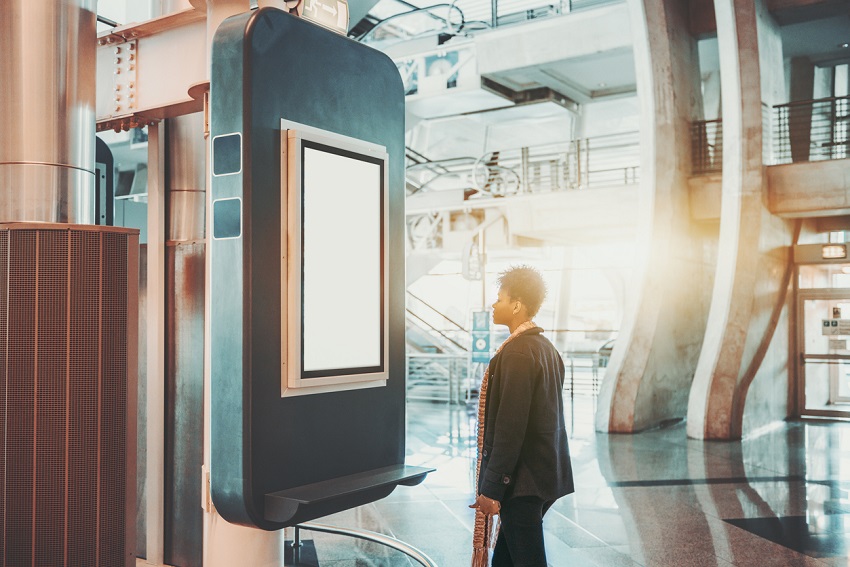Digital signage is important in many industries. From medical to food service, to retail and even corporate life, digital signage provides an invaluable service by providing information, helping to avoid conference room scheduling conflicts, displaying menu options and much more.
What is Digital Signage?
Digital signage is the use of electronic display technologies like LCD, LED, projection and e-paper to display digital images, video, web pages, weather data, restaurant menus and other information. They are used to keep visitors informed, and also to strengthen awareness of brands.

While digital signage can require an investment up front, over the long term, it is much more cost efficient than traditional signage as it is extremely flexible and adaptable for various situations and needs.
Why is Digital Signage Important?
Digital signage is important as it can help boost brand awareness in a more subtle way than static signage, while also providing a beneficial service to the end customer. Information can be displayed in a wide array of formats, including interactive, touchscreen formats. Digital signage also allows businesses to customize messages to more effectively reach specific audiences, based on time of year or even time of day, which can help increase customer retention and satisfaction.
Finally, digital signage can also lead to increases in revenue by allowing multiple ads, promotions, and product highlights to be displayed in one place. Because of its digital format, electronic signage’s messaging can be updated quickly, easily and remotely, without having to physically change out a traditional printed sign.
What is Digital Signage Used For?
Communicate & Inform
The primary benefit to digital signage is to communicate information in a way that can be easily seen and accessed by end users. The displays and screens easily display weather, sports updates, news, traffic, and important emergency updates. As the displays are digital, all information can be updated quickly and as often as desired, without having to change out a physical sign.
Entertainment
Digital signage displays are a great way to entertain while also providing useful information. Since these digital displays share some of their functionality with large televisions, videos, advertisements, and even interactive games can be played on them, helping to attract eyes and ears. These are often installed in indoor malls.
Retail: Sales, Advertising & Branding
Retail digital signage is used to communicate sales, announce product releases that are new or coming soon, and display information about the brand, store or specific items. Some retail digital signage displays also have a self-checkout feature, allowing for easier and more convenient purchases for customers.
Since these displays are digital, they also allow for real-time inventory checks so that shoppers can easily locate a specific item. You can find examples of these in malls and big box retailers.
Directory, Wayfinding & Navigation
Corporate organizations utilize digital signage for wayfinding solutions, personnel and office directories, conference room coordination, and company-wide communication. Signs and displays ensure that employees and visitors always know exactly where they are within a building or business campus, saving them time and stress.
Meeting room bookings are handled through small digital signage displays, ensuring that there are no scheduling conflicts. Finally, digital signs can be used to alert employees to important company-wide messages, including emergencies such as lockdowns or inclement weather.
Health Care
Healthcare institutions use digital signage to greet patients and visitors, as well as direct them to service areas and doctor’s offices. Many hospitals have digital directories either to help locate various departments and personnel. Digital signage can also act as a wayfinding point to help navigate hospital buildings or campuses in addition to assisting displaying wait times for the emergency rooms or urgent care facilities.
Food Service
Digital signage has become an integral part of foodservice operations by providing digital menu boards in quick service restaurants (QSRs), grocery stores, and theme parks concession stands and cafes. These displays can promote specific menu items based on time of day, highlight specials and allow for self-check-out functions as well. In addition to advertising promotions, they also keep guests safe through no-contact purchasing and are often much more efficient than traditional purchasing methods.
Outdoor Digital Signage
Outdoor digital signage is beneficial for brand awareness, transportation centers, fast-food drive-thrus, and even to display public health communications during emergency situations like the COVID-19 pandemic. These are commonly seen in bus shelters, outdoor malls, public transit stations and as digital billboards.
Since these displays are typically large and well-lit, they can also be used to promote various brands and businesses, increasing their ROI, while being easily recognizable and attractive. They are also useful for displaying bus, train, and other public transportation schedules.
Digital signage can be a useful addition to many different types of businesses, whether used to increase brand awareness, communicate information, or provide wayfinding assistance, allowing organizations of all sizes to consistently provide their customers with the best service possible.

